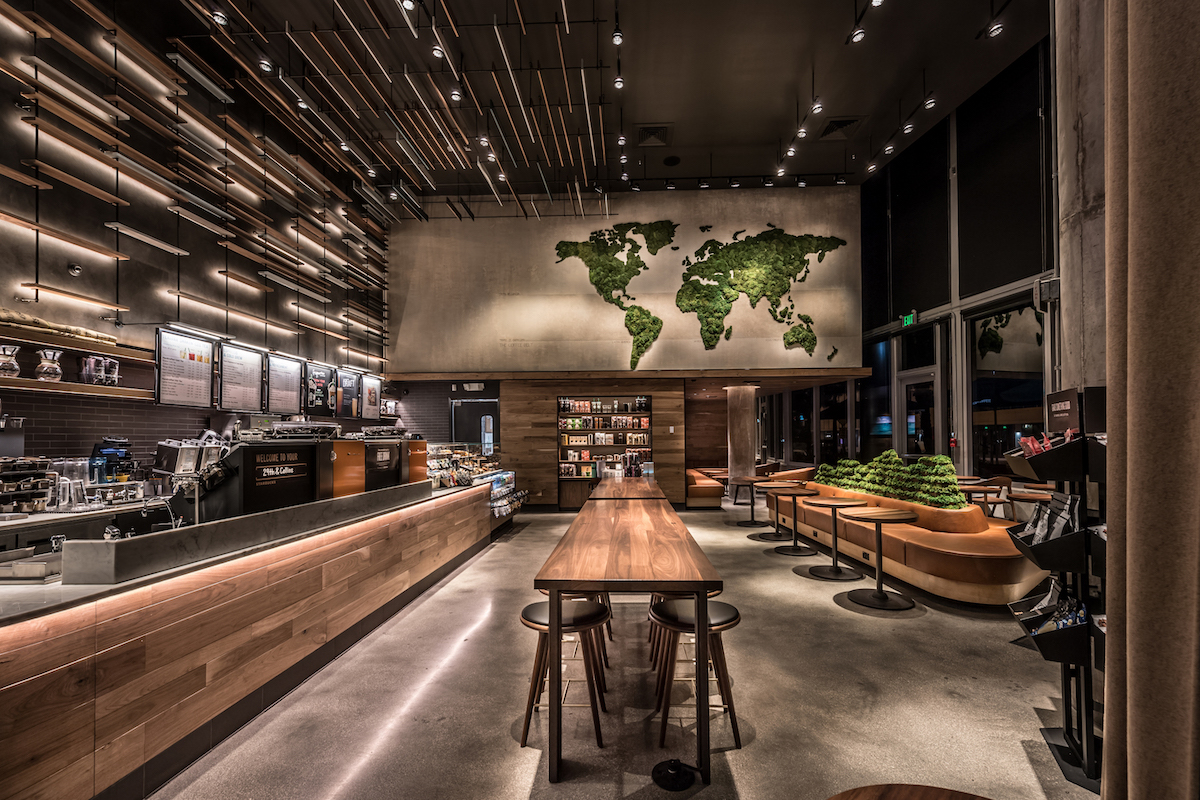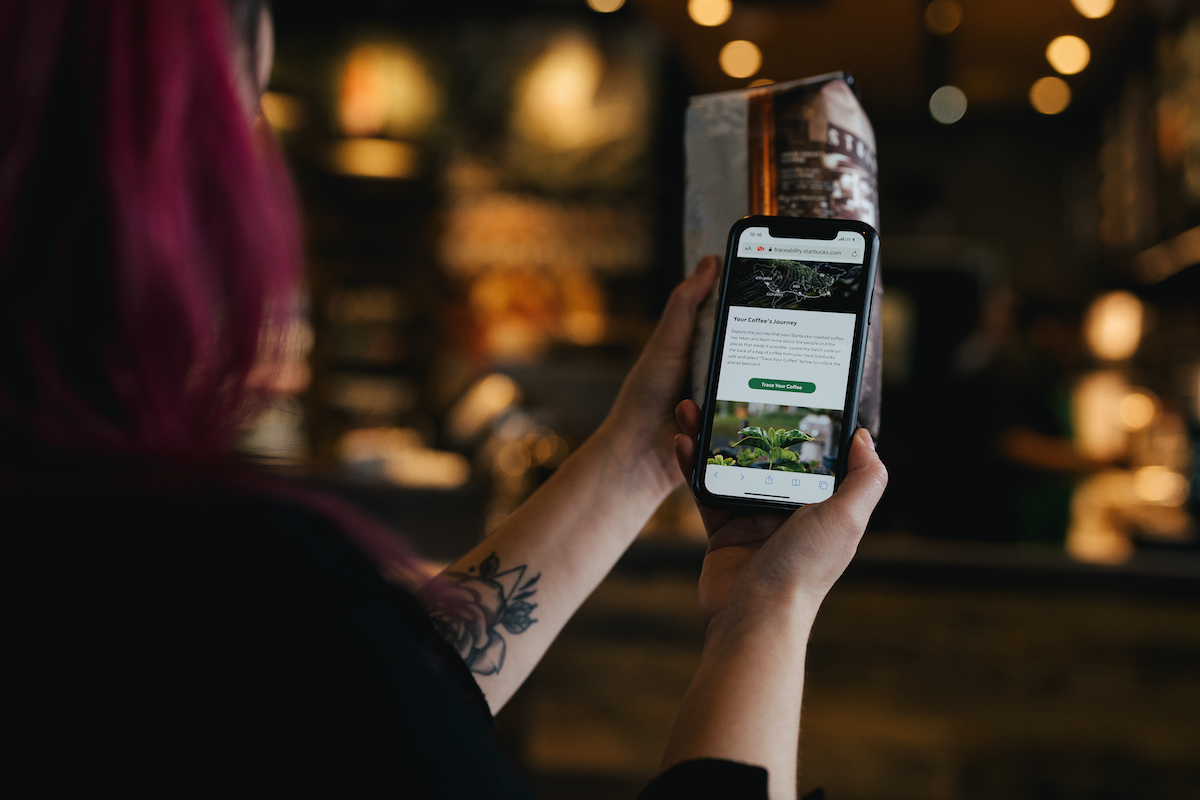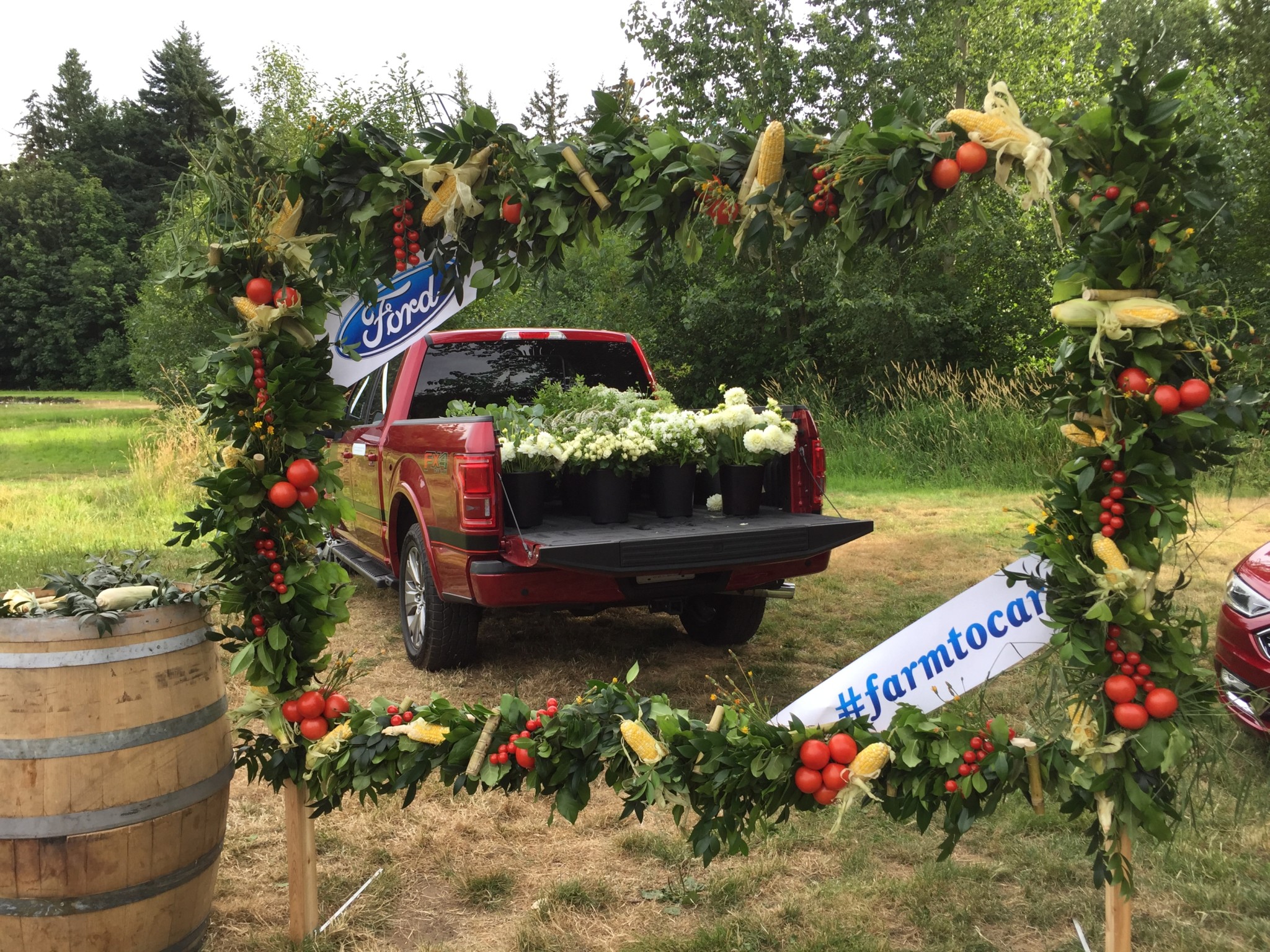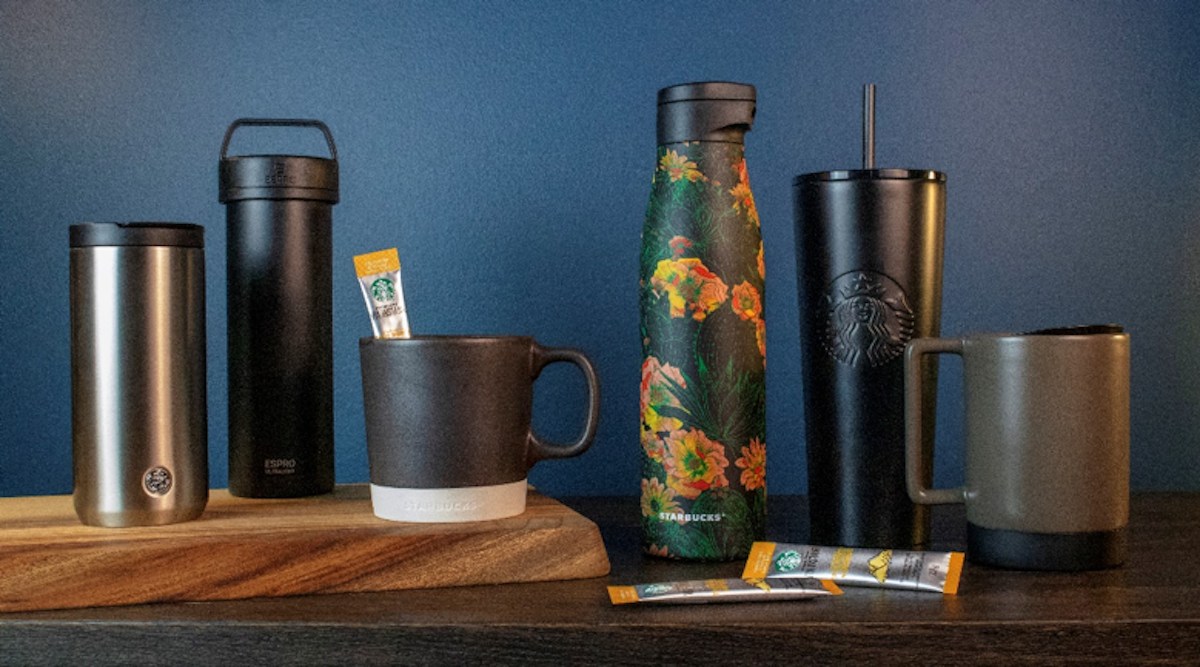Starbucks Commits to a Resource-Positive Future, Giving More than It Takes from the Planet
In a public letter to all company stakeholders, chief executive officer Kevin Johnson sets 2030 science-based targets for carbon, water and waste as part of multi-decade aspiration
Today in a public letter citing the company’s enduring mission to inspire and nurture the human spirit, Starbucks chief executive officer Kevin Johnson announced a multi-decade commitment to be a resource-positive company, aspiring to give more than it takes from the planet. The announcement included science-based preliminary targets for the reduction of carbon emissions, water use and waste by 2030, and outlined five strategies the company has identified to move toward them.
“As we approach the 50th anniversary of Starbucks in 2021, we are looking ahead with a heightened sense of urgency and conviction that we must challenge ourselves, think bigger and do much more in partnership with others to take care of the planet we share,” Johnson said.
The company’s aspiration is to become resource positive – storing more carbon than it emits, eliminating waste, and providing more clean, freshwater than it uses. “This aspiration is grounded in Starbucks mission,” Johnson said. “By embracing a longer-term economic, equitable and planetary value for our company, we will create greater value for all stakeholders.”
A comprehensive, data-driven environmental footprint of carbon emissions, water use and waste in Starbucks global operations and supply chain informed the five strategies to prioritize work:
- Expanding plant-based options, migrating toward a more environmentally friendly menu.
- Shifting from single-use to reusable packaging.
- Investing in innovative and regenerative agricultural practices, reforestation, forest conservation and water replenishment in Starbucks supply chain.
- Investing in better ways to manage waste, both in Starbucks stores and in its communities, to ensure more reuse, recycling and elimination of food waste. 5. Innovating to develop more eco-friendly stores, operations, manufacturing and delivery.
Johnson also outlined three preliminary targets for 2030:
- A 50 per cent reduction in carbon emissions in Starbucks direct operations and supply chain.
- 50 per cent of water withdrawal for direct operations and coffee production will be conserved or replenished with a focus on communities and basins with high water risk.
- A 50 per cent reduction in waste sent to landfill from stores and manufacturing, driven by a broader shift toward a circular economy. To underscore its commitment to the circular economy, Starbucks is pleased to sign the Ellen MacArthur Foundation’s New Plastics Economy Global Commitment, setting ambitious circular targets for its packaging.
On Starbucks 50th anniversary in 2021, the company will formalize its 2030 environmental goals based on learnings between now and then. Specifically, Johnson noted, the coming year will involve comprehensive market research and trials to better understand consumer behavior and incentives to encourage more use of reusable containers.
Johnson noted the importance of Starbucks partnerships with others on its journey to be a more sustainable company. Advisors to the company have provided the following comments:
Sheila Bonini, Senior Vice President, Private Sector Engagement, World Wildlife Fund (WWF), said: “As the global climate crisis is fueling a new set of challenges for the planet, Starbucks has set an ambitious vision to give more than they take from our planet’s finite natural resources. This is exactly the kind of leadership we need to see from businesses—an opportunity to invest in their own future while making their global customer base a partner in this sustainability journey.”
William McDonough, CEO, McDonough Innovation, said: “I am inspired by Starbucks resource positive goals because commerce is the engine of change and these goals allow us, with constant humility, to create authentic Environmental, Social and Governance value. These goals also encourage us to innovate toward the dream of Cradle to Cradle: A delightfully diverse, safe, healthy and just world, with clean air, water, soil and power – economically, equitably, ecologically and elegantly enjoyed. Imagine…have a cup of coffee and the world gets a little bit better.”
Sander Defruyt, Lead of the New Plastics Economy initiative at the Ellen MacArthur Foundation, said: “The New Plastics Economy Global Commitment unites businesses, governments and others behind a clear vision for a world where plastic never becomes waste or pollution, and the ambitious targets required to achieve it. Creating this circular economy for plastic will be a challenging journey, but by signing the Global Commitment, Starbucks is joining forces with more than 450 signatories to make it possible. We urge others to join them. By coming together, we can eliminate the plastics we don’t need and innovate, so the plastics we do need can be safely and easily circulated, keeping them in the economy and out of the environment.”
Mark Lee, Executive Director, SustainAbility, said: “It is encouraging to see Starbucks embrace a data-driven and team-driven approach to creating a resource positive future. Given their proven ability to tap into the passion and expertise of their partners around the globe, I am confident that they will succeed and that this will have a huge impact. Starbucks sustainability commitment is deeply embedded in their enterprise-wide strategies and in the hearts and minds of their leaders. Their most senior leadership was directly involved in the creation of this plan, and they did an outstanding job convening experts in the field in the course of its development, inviting them to help Starbucks dream big on what’s possible for the planet. This puts Starbucks in the vanguard of corporate sustainability leaders, and we hope more businesses will be inspired to develop similarly robust approaches to addressing the world’s most pressing sustainability challenges.”
Dr. M. Sanjayan, CEO, Conservation International, said: “This pledge to become ‘resource positive’ is bold and necessary – exactly what I’ve come to expect from Starbucks. For more than two decades, Conservation International has partnered with Starbucks to source coffee in ways that are good for people and the planet. Today, 99 percent of Starbucks coffee is verified as ethically sourced – but we have not rested. Now we are working to bring the entire coffee sector along to make coffee the world’s first sustainable agricultural product. This is what it will take to meet today’s challenges: bold vision paired with action that does not rest.”
Conrad MacKerron, Senior Vice President, As You Sow, said: “As You Sow and Trillium Asset Management applaud Starbucks commitment to undertake extensive research and testing on consumer behavior and ways to dramatically increase utilization of reusable beverage containers, and to set a new reusables goal within one year. Socially conscious shareholders hope the commitment to reduce waste sent to landfill with be a catalyst for new programs on reuse, recycling, and compostability in fast-growing developing markets.”
Ray Silverstein, vp of Store Development at Starbucks and the sponsor of Partners for Sustainability, said: “Starbucks commitment to sustainability has been a meaningful way for our partners to engage and support their communities and neighborhoods. With today’s announcement, we are even more energized to have science-based strategies to guide us in setting priorities and accelerating this work. Whether it’s reducing our environmental footprint in our stores, in our supply chain, or through our ability to engage our communities — we will have new ways to focus our efforts to make the greatest impact.”
Learn more by visiting stories.starbucks.ca/en/stories/sustainability.
About Starbucks
Since 1971, Starbucks Coffee Company has been committed to ethically sourcing and roasting high-quality arabica coffee. Today, with more than 30,000 stores around the globe, the company is the premier roaster and retailer of specialty coffee in the world. Through our unwavering commitment to excellence and our guiding principles, we bring the unique Starbucks Experience to life for every customer through every cup. To share in the experience, please visit us in our stores or online at Starbucks Stories or Starbucks.com.
Forward-Looking Statements
Certain statements contained in this release are “forward-looking statements” within the meaning of applicable securities laws and regulations, including statements about executing our strategy, driving growth and building shareholder value. Such forward-looking statements are based on current management expectations and satisfactions of certain conditions that are subject to various risks and uncertainties, including market conditions and those risks detailed in the Company’s filings with the Securities and Exchange Commission, including the “Risk Factors” section of the Starbucks Annual Report on Form 10-K for the fiscal year ended September 30, 2018. The Company assumes no obligation to update any of these forward-looking statements.
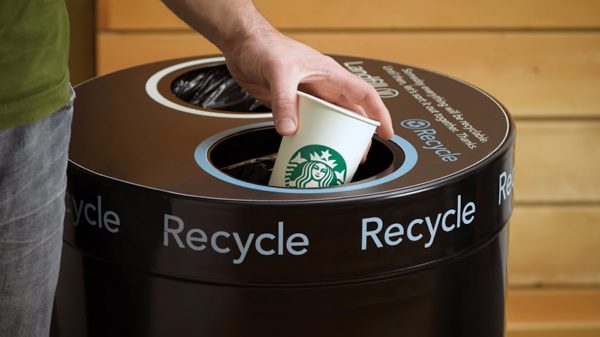
5 Things to Know About Starbucks New Environmental Sustainability Commitment
On Tuesday, Starbucks announced “a bold, multi-decade aspiration” to cut carbon, water and waste each by 50 percent by 2030 and give back to the planet by becoming resource positive in the future.
Starbucks chief executive officer Kevin Johnson announced Tuesday a renewed focus on sustainability, all with an eye toward someday “giving more than we take from the planet.”
“Our aspiration is to become resource positive — storing more carbon than we emit, eliminating waste, and providing more clean freshwater than we use,” Johnson wrote in a letter posted Tuesday.
His letter included preliminary targets for 2030 as well as the company’s commitment to be transparent in its reporting against short- and long-term goals. He also vowed to work with Starbucks partners, customers and other stakeholders on this journey. The company will spend the next year continuing to test and learn before formalizing these sustainability targets as part of the company’s 50th anniversary in 2021, he wrote.
“Our eyes are wide open knowing that we do not have all the answers or fully understand all the complexities and potential consequences,” Johnson wrote. “Now, it’s time to create an even broader aspiration – and it’s work that will require visionary thinking, new ways of working, investment of resource and urgent action.”
Starbucks has over 31,000 stores worldwide with 400,000 partners serving 100 million customers a week and the road ahead will require commitment and creativity from partners and customers across the globe as well as from entrepreneurs, non-profits and suppliers, he said.
Here are five important things to know about Tuesday’s announcement:
1. Starbucks wants to halve its carbon emissions, waste output and water impact in the next decade while growing the business at the same time.
Johnson’s letter outlined three preliminary targets: By 2030, Starbucks will aim to reduce carbon emissions by 50 percent, reduce waste sent to landfills from stores and manufacturing by 50 percent driven by a broader shift toward a circular economy, and will also conserve or replenish 50 percent of the water currently being used for direct operations and coffee production.
2. There’s a new way to track progress.
Starbucks has long used science-based research to assess our progress. Now, the company has also released a comprehensive environmental footprint of carbon emissions, water use and waste in Starbucks global operations and supply chain. Created in partnership from Quantis and World Wildlife Fund, it will serve as a baseline for measuring future progress. “As we move forward, we will be transparent in reporting short- and long-term progress against our goals,” Johnson wrote.
3. From more plant-based food and beverages to reusables, Starbucks is looking far and wide for opportunities to transform.
Starbucks identified key areas in which it can make big impacts by 2030, including expanding plant-based and environmentally friendly menu options; shifting from single-use to reusable packaging; investing in innovative agricultural, water conservation and reforestation practices; looking for ways to better manage waste (including food waste) in stores and in communities; and developing more eco-friendly operations, from stores to supply chain to manufacturing.
4. Yesterday’s groundwork = a head start.
Over the years, the company has partnered with other organizations and invested in ways to bring sustainable practices to scale, including the Starbucks FoodShare program, NextGen Cup Challenge, becoming a leader in L.E.E.D. (Leadership in Energy and Environmental Design) stores, investments in renewable energy and a goal to eliminate plastic straws by the end of 2020. It has also spent two decades, in partnership with Conservation International, to achieve the milestone of sourcing 99% of coffee ethically through C.A.F.E. (Coffee and Farmer Equity) practices. Research shows that implementing C.A.F.E. practices over the years has more than halved what the company’s carbon footprint would have otherwise been. “This pledge to become ‘resource positive’ is bold and necessary – exactly what I’ve come to expect from Starbucks,” said Dr. M. Sanjayan, chief executive officer of Conservation International. “For more than two decades, Conservation International has partnered with Starbucks to source coffee in ways that are good for the people and the planet. We succeeded – today, 99 percent of Starbucks is ethically sourced – but we have not rested. Now we are working to bring the entire coffee sector along to make coffee the world’s first sustainable agricultural product. This is what it will take to meet today’s challenges: bold vision paired with action that does not rest.”
5. A greener green apron.
Starbucks partners are mobilizing for change in increasing numbers. More than 18,000 partners have enrolled in an online “Greener Apron” course on sustainability and environmental stewardship in the last two years, and the number continues to grow. Lisa Ference, a store manager in Conway, Ark., is among those. Her “aha moment” came a few years ago when an oil spill near her home devastated a local lake, and ever since she’s felt strongly about getting involved and speaking up for wildlife and the environment. She was thrilled by Tuesday’s news from Starbucks. “I feel certain that over the next decade we will become the model for other companies seeking to become resource-positive as this is, in my opinion, also the pathway to sustaining our business in the long term,” she said. “There are so many reasons to be grateful for this company, but the most important is that our mission and values are a reflection of my own. Sustainability is a flagship issue in my personal journey, one that I feel incredibly passionate about, and it’s a privilege to work for an organization that doesn’t wait to be summoned to act. We do it because it’s the right thing to do.”
The announcement is an important moment for Starbucks, said Sheila Bonini, senior vice president leading private sector engagement for World Wildlife Fund, the world’s leading conservation organization. Bonini said a lot of companies make environmental commitments, but what excites her most are the moments down the road when those companies get to celebrate each step toward meeting those goals.
“I’m impressed with Starbucks leadership – with their ambitious strategy to tackle sustainability as well as their humility and willingness to look at all parts of the business to try to achieve it,” Bonini said. “We are already starting to see some catastrophic effects of climate change. It’s clear our level of consumption and production today is more than the planet can take. We all need to address it. We need to address it yesterday.”
She believes it’s important for companies to not only make it easier for people to act sustainably, but to help them understand why it’s important.
“People want to be green, but we have to help them get there,” she said. “We’re all partners in this.”
Media release and images provided by Leanne Butchart, Talk Shop Media.
[wdi_feed id=”2″]

